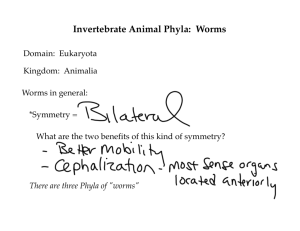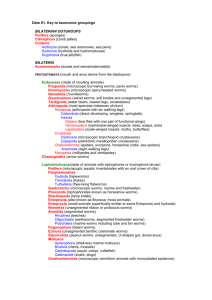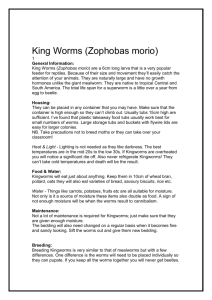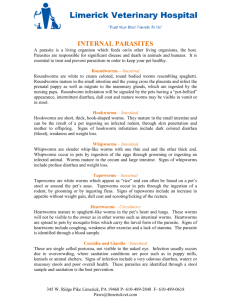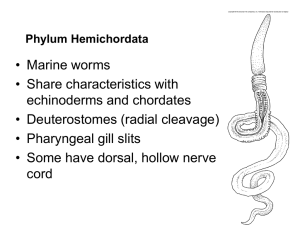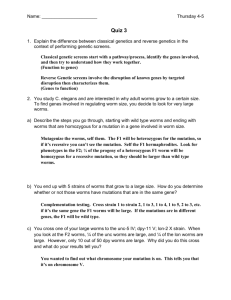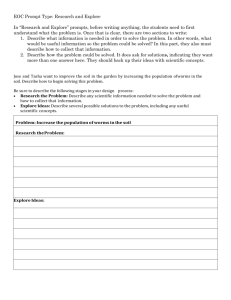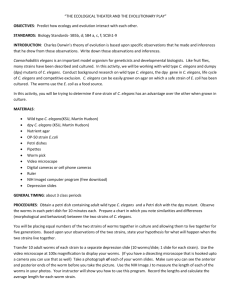Roles of TRPA-1 and TRPV-1 channels in learning and memory in
advertisement
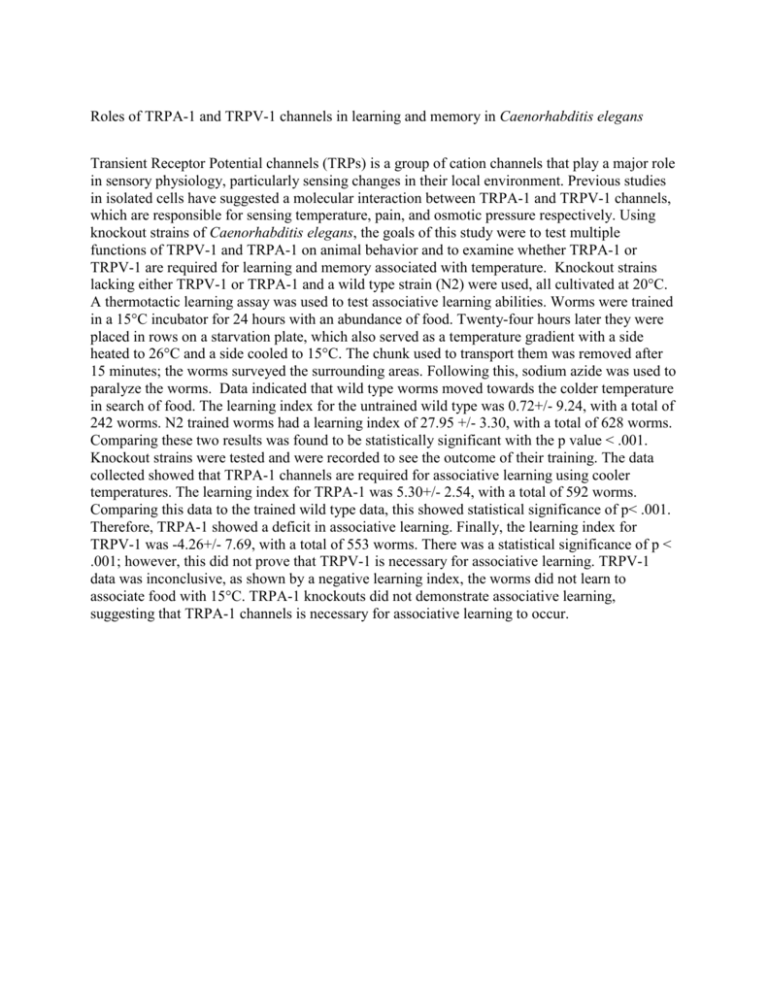
Roles of TRPA-1 and TRPV-1 channels in learning and memory in Caenorhabditis elegans Transient Receptor Potential channels (TRPs) is a group of cation channels that play a major role in sensory physiology, particularly sensing changes in their local environment. Previous studies in isolated cells have suggested a molecular interaction between TRPA-1 and TRPV-1 channels, which are responsible for sensing temperature, pain, and osmotic pressure respectively. Using knockout strains of Caenorhabditis elegans, the goals of this study were to test multiple functions of TRPV-1 and TRPA-1 on animal behavior and to examine whether TRPA-1 or TRPV-1 are required for learning and memory associated with temperature. Knockout strains lacking either TRPV-1 or TRPA-1 and a wild type strain (N2) were used, all cultivated at 20°C. A thermotactic learning assay was used to test associative learning abilities. Worms were trained in a 15°C incubator for 24 hours with an abundance of food. Twenty-four hours later they were placed in rows on a starvation plate, which also served as a temperature gradient with a side heated to 26°C and a side cooled to 15°C. The chunk used to transport them was removed after 15 minutes; the worms surveyed the surrounding areas. Following this, sodium azide was used to paralyze the worms. Data indicated that wild type worms moved towards the colder temperature in search of food. The learning index for the untrained wild type was 0.72+/- 9.24, with a total of 242 worms. N2 trained worms had a learning index of 27.95 +/- 3.30, with a total of 628 worms. Comparing these two results was found to be statistically significant with the p value < .001. Knockout strains were tested and were recorded to see the outcome of their training. The data collected showed that TRPA-1 channels are required for associative learning using cooler temperatures. The learning index for TRPA-1 was 5.30+/- 2.54, with a total of 592 worms. Comparing this data to the trained wild type data, this showed statistical significance of p< .001. Therefore, TRPA-1 showed a deficit in associative learning. Finally, the learning index for TRPV-1 was -4.26+/- 7.69, with a total of 553 worms. There was a statistical significance of p < .001; however, this did not prove that TRPV-1 is necessary for associative learning. TRPV-1 data was inconclusive, as shown by a negative learning index, the worms did not learn to associate food with 15°C. TRPA-1 knockouts did not demonstrate associative learning, suggesting that TRPA-1 channels is necessary for associative learning to occur.


